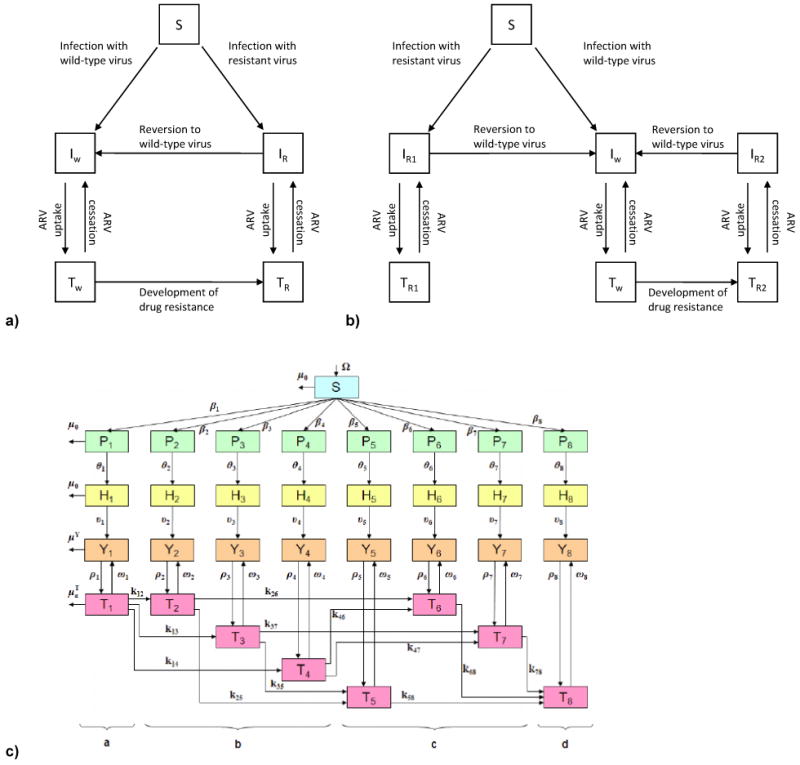Figure 2.

a) Basic structure of deterministic HIV transmission models in the context of drug resistance. The main compartments are: susceptible (S), infected with wild-type virus and untreated (Iw), infected with drug-resistant virus and untreated (IR), infected with wild-type virus and receiving ARVs (Tw), and infected with drug-resistant virus (TR) and receiving ARVs. Not included in the diagram are stages of infection, specific resistance categories to particular drug classes, and other modifications included in some models. (For simplicity, model entry and exit rates are omitted. Figure adapted from Marks et al (8) but a similar structure for resistance transmission has been used for many cART models (4, 11).) b) Change to model structure to separate individuals infected with HIV with primary (transmitted, R1) resistance and those initially infected with wild-type HIV who acquire resistance as a result of treatment: secondary (acquired, R2) ARV resistance. Similar structure to that used by Hoare et al (7). c) Structure of recent model of HIV transmission among MSM in San Francisco, US, with 33 compartments: schematic taken from Smith? et al (9). Compartments are: susceptible (S), HIV-infected with primary infection (P), infected not eligible for cART (H), cART eligible but not yet treated (Y) and treated (T). Strains are grouped into eight categories (subscripts) based upon resistance to ARV drug classes (further details in publication). PrEP models will differ because ARVs will be taken by susceptible (S) individuals, but the issues and concepts discussed here are similar.
Figure 2a adapted from Marks et al [8], 2b is adapted from Hoare et al [7] and figure 2c is reproduced with permission from Smith et al [9].
